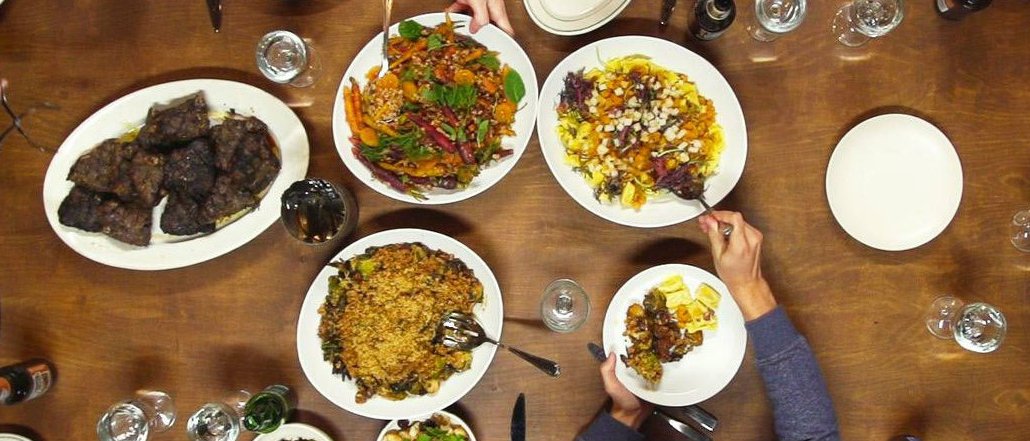Inside the Live gold rush: Tastemade plans to do 100 Facebook Live shows every month

Tastemade isn’t just experimenting with Facebook Live, it’s going all in.
The digital food and travel publisher, already one of the biggest video publishers on Facebook, plans to do 100 live shows a month on the platform. Show formats will include recipe tutorials, cooking programs with on-camera talent, travel shows and other new formats designed specifically to be watched in a live setting, according to Oren Katzeff, head of programming at Tastemade. The programs will typically run between 10 to 60 minutes, instead of the shorter videos Facebook users have grown accustomed to. And for some of the content, Tastemade will look to repackage it for other social platforms including YouTube and Snapchat.
“We’re testing a lot of new formats,” said Katzeff. “All of them have the same running thread, which is creating things that get people to engage and feel like they’re part of the conversation.”
Tastemade said it’s working closely with Facebook to develop content for a live setting. Katzeff declined to answer if the company’s live-video push is being funded by Facebook, but the platform has been giving money to companies like BuzzFeed and The New York Times to stream live video, according to Recode.
Some of Tastemade’s successful early attempts with Facebook Live are its food art videos. Take, for instance, this 55-minute live stream it aired on April 6, in which a local LA-based latte artist visited the company’s studios and showed off his artistry. The video received 1.4 million views in that first hour. At its peak, the stream had nearly 140,000 simultaneous viewers, according to Tastemade. “People were guessing what the artist was making and then started making suggestions,” Katzeff said.
While Facebook Live has made it easy for many publishers to reach and engage with a lot of viewers, Tastemade also sees potential in growing its existing original series as well as developing new formats altogether. For instance, it recently did a live version of its “Tiny Kitchen” series, in which a real dish is made in a miniature toy kitchen. That 13-minute live video generated nearly a million live views, according to Katzeff.
“The reality is, if we do our jobs right, there is going to be an element of live that has a life beyond just the live experience,” he said. “Our pancake art video was 36 minutes long, but we can easily take five minutes from it and create a pancake art highlight show, which we can put on YouTube or Snapchat.”
This approach will be reflected in how Tastemade is devoting resources toward live. The company expects to have a three-person team focused solely on Facebook Live. But with the ability for some of the content to extend to other platforms, the effort will have continued oversight from the larger programming and production teams.
While most of Tastemade’s existing live content has been shot using a smartphone or a tablet, the company has the ability to record Facebook live videos using a camera. It plans to do more polished, TV-quality video streams. At its F8 conference, Facebook announced numerous tech partners that would allow media companies to do high-end video streams for Facebook Live.
“What we’ve found so far [on Facebook Live] it does not need to be TV-quality to get people excited,” said Katzeff. “That doesn’t mean everything we do is going to be raw, but we do have the range to test different styles of video.”
Right now, Tastemade’s focused on creating live videos and developing an audience for them on Facebook. It’s had conversations with advertisers interested in Facebook Live, but with Facebook yet to offer a live-video monetization product, those conversations remain hypothetical.
“Our latte art videos had 125,000 to 140,000 people watching across the entire time — to some extent that’s on par with TV,” said Katzeff. “It’s not exactly apples to apples, but it does open the door to additional opportunities with brands.”
More in Media

Digiday+ Research: Publishers’ growing focus on video doesn’t translate to social platforms
Major publishers have made recent investments in vertical video, but that shift is not carrying over to social media platforms.

Technology x humanity: A conversation with Dayforce’s Amy Capellanti-Wolf
Capellanti-Wolf shared insight on everything from navigating AI adoption and combating burnout to rethinking talent strategies.

How The Arena Group is rewriting its commercial playbook for the zero-click era
The company is testing AI-powered content recommendation models to keep readers moving through its network of sites and, in doing so, bump up revenue per session – its core performance metric.





